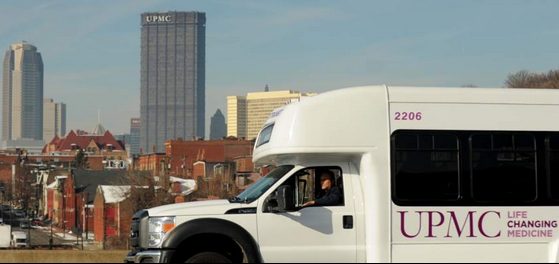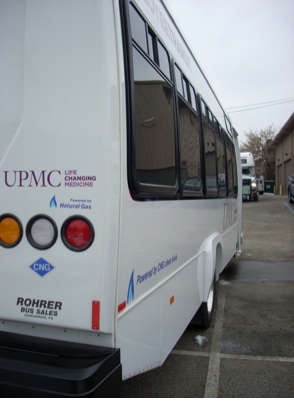Western PA edges to goal of energy independence
 Courtesy of TribLive by Adam Smeltz: The once-distant concept of energy independence, given a national spotlight in the 2012 presidential race, is closer to becoming a reality on a regional level, energy analysts say.
Courtesy of TribLive by Adam Smeltz: The once-distant concept of energy independence, given a national spotlight in the 2012 presidential race, is closer to becoming a reality on a regional level, energy analysts say.
Pennsylvanians rely on in-state sources for at least 64 percent of their energy, a relatively high figure among states, according to the Washington & Jefferson College Energy Index. Its most recent numbers show a one-year surge of nearly 10 percentage points from 2009 to 2010, driven by the popularity of domestic natural gas in manufacturing, transportation and power generation.
“I think it’s safe to say those trends in general would be expected to continue,” said Robert Dunn, one developer of the index. “Natural gas will definitely impact all the other fuels.”
The gas boom from Marcellus shale exploration and better drilling methods are helping erode Pennsylvania’s reliance on coal and petroleum, though the coal, nuclear and renewable industries are forecast to retain a significant presence. That “huge diversification in our generation portfolio” sets the state apart, said Robert F. Powelson, chairman of the Pennsylvania Public Utility Commission.
He said the abundance of natural gas has “a profound impact in terms of our ability to attract and retain companies” by offering stable energy prices.
“It causes a price-suppression effect, and we’re all benefitting from it,” Powelson said.
 Impacts are especially clear in the electricity industry, where nuclear power fulfills about a third of Pennsylvania demand. Natural gas fueled about 18 percent of power generated in 2011 — about half as much as coal — but promises to grow, according to the PUC.
Impacts are especially clear in the electricity industry, where nuclear power fulfills about a third of Pennsylvania demand. Natural gas fueled about 18 percent of power generated in 2011 — about half as much as coal — but promises to grow, according to the PUC.
Renewable energy sources such as wind, solar power and ethanol are sharply gaining, the Energy Index reports. Those sources produced 3.9 percent of the energy Pennsylvania consumed in 2010, according to the federal Energy Information Administration. State law requires the figure to hit 18 percent by 2020.
Much of the wind-power development is expected in mountainous areas east of Pittsburgh, Dunn said.
“Most new power plants built will be wind, solar and natural gas going forward,” said Douglas Biden, president at the Electric Power Generation Association.
Environmental regulations, sluggish increases in electricity demand and low natural-gas prices are contributing to declines for coal, of which Pennsylvania long has been a net exporter, he said. Coal accounted for 29.4 percent of energy used in Pennsylvania in 2010, down from 33.1 percent in 2006.
About 10 coal-fired plants in the state are set to be idled in the next couple years, with more expected to follow, Biden said.
Still, the coal industry expects its product to be a dominant fuel domestically and globally, said Pennsylvania Coal Alliance CEO John Pippy. He cited an International Energy Agency outlook that suggests coal will account for 35 percent to 45 percent of global-fuel use by 2030.
“The energy sector is traditionally a cyclic industry,” Pippy said. He said natural-gas prices should climb as it finds more uses, which will make “coal more favorable again.”
UPMC Bedford Memorial Hospital in Everett dropped coal as a heat source several years ago, switching to oil as it reduced emissions. It might switch again, to a by-product of natural-gas production: propane.
The move could save money for UPMC, which cut fuel costs by replacing some diesel buses with natural-gas vehicles, said Drew Chidester, senior director of energy.
 “We looked at it and said: If this works for (replacing) diesel trucks, there might be a place for us to do this at other facilities,” he said.
“We looked at it and said: If this works for (replacing) diesel trucks, there might be a place for us to do this at other facilities,” he said.
Gov. Tom Corbett’s Marcellus Shale Advisory Commission, on which Powelson serves as a member, encouraged Pennsylvania to think broadly about using natural gas to power mass transit, school buses, buildings and state-owned facilities.
UPMC plans to save about $120,000 a year and cut emissions by swapping out 20 diesel buses for those powered by compressed natural gas, said Tim Nedley, senior director of materials management. Thirteen buses are in place; seven more should arrive in July.
“It’s the right thing to do for the environment. It’s responsible for the organization, and it allows us to save some money so we might make a case for additional compressed-natural-gas buses,” Nedley said.
Overall natural gas use in Pennsylvania climbed 14.7 percent from 2008 to 2010, when it made up a fifth of energy consumption. But state gas production soared about 189 percent in the same period, said Leslie Dunn, another Energy Index developer.
The Energy Information Administration said production doubled in 2011. Already a net exporter of electricity, the state should become a net exporter of natural gas, analysts say.
“I think it’s going to be a new horizon for the state,” Powelson said.
Colorado-based Bentek Energy has said gas production in Pennsylvania should increase 78 percent in the next three years, because of shale gas. New distribution systems should make it easier to push the fuel into populated markets.
“The longer the price stays low, and assuming the technology continues to advance, it gives the United States and Pennsylvania a great competitive advantage,” said business attorney Frank A. Luchak.
Category: General Update, Transit News










